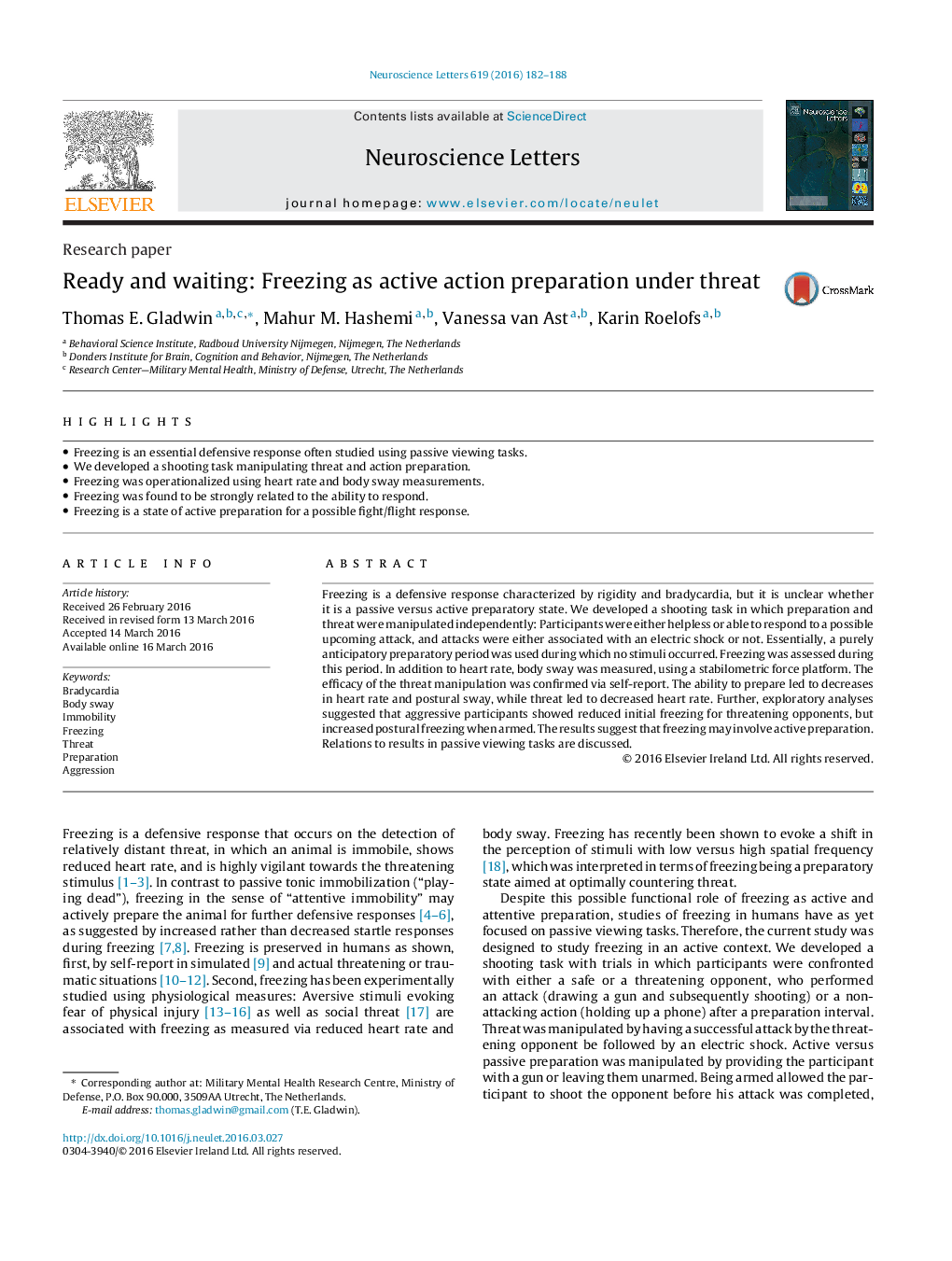| Article ID | Journal | Published Year | Pages | File Type |
|---|---|---|---|---|
| 6279764 | Neuroscience Letters | 2016 | 7 Pages |
Abstract
Freezing is a defensive response characterized by rigidity and bradycardia, but it is unclear whether it is a passive versus active preparatory state. We developed a shooting task in which preparation and threat were manipulated independently: Participants were either helpless or able to respond to a possible upcoming attack, and attacks were either associated with an electric shock or not. Essentially, a purely anticipatory preparatory period was used during which no stimuli occurred. Freezing was assessed during this period. In addition to heart rate, body sway was measured, using a stabilometric force platform. The efficacy of the threat manipulation was confirmed via self-report. The ability to prepare led to decreases in heart rate and postural sway, while threat led to decreased heart rate. Further, exploratory analyses suggested that aggressive participants showed reduced initial freezing for threatening opponents, but increased postural freezing when armed. The results suggest that freezing may involve active preparation. Relations to results in passive viewing tasks are discussed.
Related Topics
Life Sciences
Neuroscience
Neuroscience (General)
Authors
Thomas E. Gladwin, Mahur M. Hashemi, Vanessa van Ast, Karin Roelofs,
